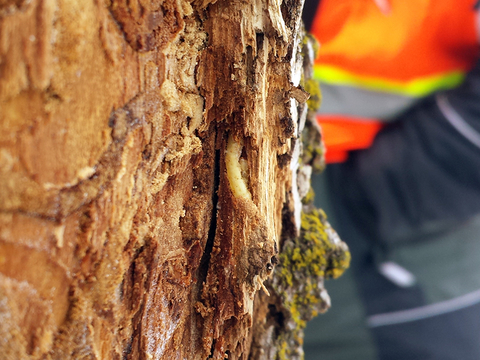How will this warmer winter weather affect the survival of pests like emerald ash borer (EAB)?
Emerald ash borers generally have a one-year life cycle that can extend to two years in a vigorously growing ash tree. EAB larvae live under the bark of ash trees and damage the tree's outer sapwood and vascular tissue (phloem) that carries food from the leaves to the rest of the tree. These tunnels girdle the trunk and branches, interrupting the flow of water and nutrients. A tree can be killed by EAB in as little as 2 to 4 years.
Read more about emerald ash borer in Minnesota.
While subzero temperatures are not the most pleasant conditions for us, they can be a factor in helping to control pests. Research has shown that if temperatures get down to minus 30 degrees F for 24 to 48 hours, a significant number of EAB larvae will likely be killed. Our typical cold temperatures in Minnesota may be part of the reason that EAB has progressed slower through our state than in other states such as Michigan and Ohio.
Warmer winter temperatures mean EAB larvae will be more likely to survive. If temperatures warm up faster in the spring or stay warm longer into fall, larvae can feed over a longer time. This may result in a larger number of larvae emerging after one year instead of over a two-year cycle.
Another factor that can make EAB damage in ash trees worse is drought conditions during previous growing seasons. Imagine being stressed from everyday life and then you get the flu. As for all living creatures, stress makes plants more susceptible to pests and diseases and less able to recover from damage.
Lack of snow cover is another issue that may stress trees. Snow is an excellent insulator that protects roots by moderating soil temperatures. If we suddenly have an extreme drop in temperature that causes the ground temperature to also drop, we may see greater than usual root death.


